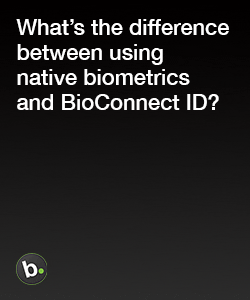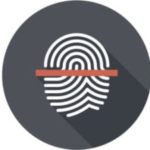Biometric technology offers a wide range of applications, and has helped to fuel huge technological innovations in areas like mobile devices and financial services. Now, it’s starting to make a big impact in the world of healthcare, with a burgeoning market expected to grow considerably in the coming years. One forecast from last year, for example, predicted that the global healthcare biometrics market will reach a value of over $5 billion in 2023, while another report predicted a value of $14.5 billion in 2025. Fiscal projections aside, healthcare biometrics is also going to deliver tangible benefits in terms of care and patient outcomes.
That’s why February of 2019 is Healthcare Biometrics Month at FindBiometrics, and why we recently established an important new partnership with HIMSS, the healthcare industry’s biggest IT symposium. But before we get ahead of ourselves, it’s a good idea to take a step back and look at the myriad ways biometric technologies are already starting to shake up healthcare:
Patient Identification
One of the most important areas in which biometrics are starting to make a big difference is in patient identification. A survey of CIOs from a range of healthcare organizations last year found 17 percent admitting that patient misidentification at their institution had resulted in harm to a patient.
That survey was commissioned by Imprivata, whose PatientSecure system allows hospitals to directly link patients’ palm vein biometrics to their records, helping to ensure that they can be reliably identified, even in emergency situations in which patients aren’t able to identify themselves. Another solution, offered by a firm called Element, enables Android devices to collect palm and face biometrics and link them to healthcare patients. Element’s solution has been embraced by a global nonprofit seeking to extend healthcare services to young people around the world who lack the kind of official documentation that’s often needed to receive care.
Biometric technology can also be used to authenticate patients in remote care. For example, Fujitsu announced a new healthcare communications platform at last year’s HIMSS designed to let doctors directly interface with patients through a mobile device, with support for multimodal authentication in place to ensure that it is actual, registered patients receiving the virtual care rather than impostors. Likewise, ImageWare’s Pillphone mobile app uses fingerprint recognition to link legitimate users to healthcare practitioners, and is FDA-approved.
Medication and Controlled Substances
A related area is EPCS and the dispensing of medication. HID Global, a renowned provider of biometric authentication solutions, has formally called for greater adoption of electronic prescriptions in testimony before the FDA’s Opioid Policy Steering Committee; and Imprivata already offers a DEA-compliant biometric authentication solution for the Electronic Prescription of Controlled Substances.
And then there’s the emergence of sophisticated new automated medication dispensers that incorporate biometric authentication. ImageWare recently announced a partnership with Gatekeeper Innovation, the developer of a medication bottle featuring a combination lock, potentially pointing the way toward a future bottle solution that could incorporate ImageWare’s biometric technology; and Toronto-based AceAge announced last year an automated medication dispenser that uses facial recognition from Applied Recognition to ensure that pills are distributed only to the right users.
By leveraging biometric technologies for authentication, all of these solutions can help to ensure that medication goes only to legitimate recipients, keeping controlled substances out of the hands of children and those who might abuse such drugs.
A Healthy Approach to Data Security
While biometric identification can help to ensure that patients get the care and medicine they need when they need it, it can also be used to protect patient data. Patient records are increasingly going digital, and while that can help to make the practice of healthcare more efficient, it opens up the possibility of hacking attacks and other data breaches. Hence the emergence of a growing number of biometric authentication solutions for access to healthcare IT assets.

HP, for example, launched new laptops at last year’s HIMSS designed specifically for use in healthcare environments, and featuring support for fingerprint-based authentication. Not long after that, a company called Lightspeed announced a healthcare-focused biometric authentication device that can be clipped to a computer monitor or plugged into a USB port; and shortly before HIMSS 2018 the provider of a medical records transcription app for doctors called Surgical Notes announced a re-tooled version of the app featuring biometric authentication to help protect its sensitive data.
Meanwhile, healthcare providers themselves have started to show a strong appetite for this kind of biometric security. As far back as 2017, biometric security specialist BIO-key announced that it had brought in a quarter of a million dollars in business from 10 clients in the healthcare sector in the second quarter alone, all of which demonstrating an interest in fingerprint-based authentication solutions.
The Future of Healthcare

As for what’s next, exciting new innovations are on the horizon. More than one blockchain platform has emerged for the storage and exchange of medical data; and biometric authentication, thanks to the biographical anonymity it allows, has already proven popular in the broader blockchain space.
AI is also poised to play a greater role: Last summer, researchers announced a computer vision system that could detect eye disease more accurately than doctors; and another research partnership was announced that would delve into voice biometrics for clinical diagnoses. Given the rapid advancement that machine learning brings to biometric technologies, we could very well see many more of these kinds of diagnostic systems going forward.
It’s a brave new world that’s emerging as the worlds of biometrics and healthcare converge. Stay tuned to FindBiometrics throughout February as we deliver the latest news and analysis from this exciting new vertical market.
*
Healthcare Biometrics Month is made possible by our sponsors: BioConnect, Veratad, and HID Global.
February 7, 2019 – by Alex Perala








Follow Us